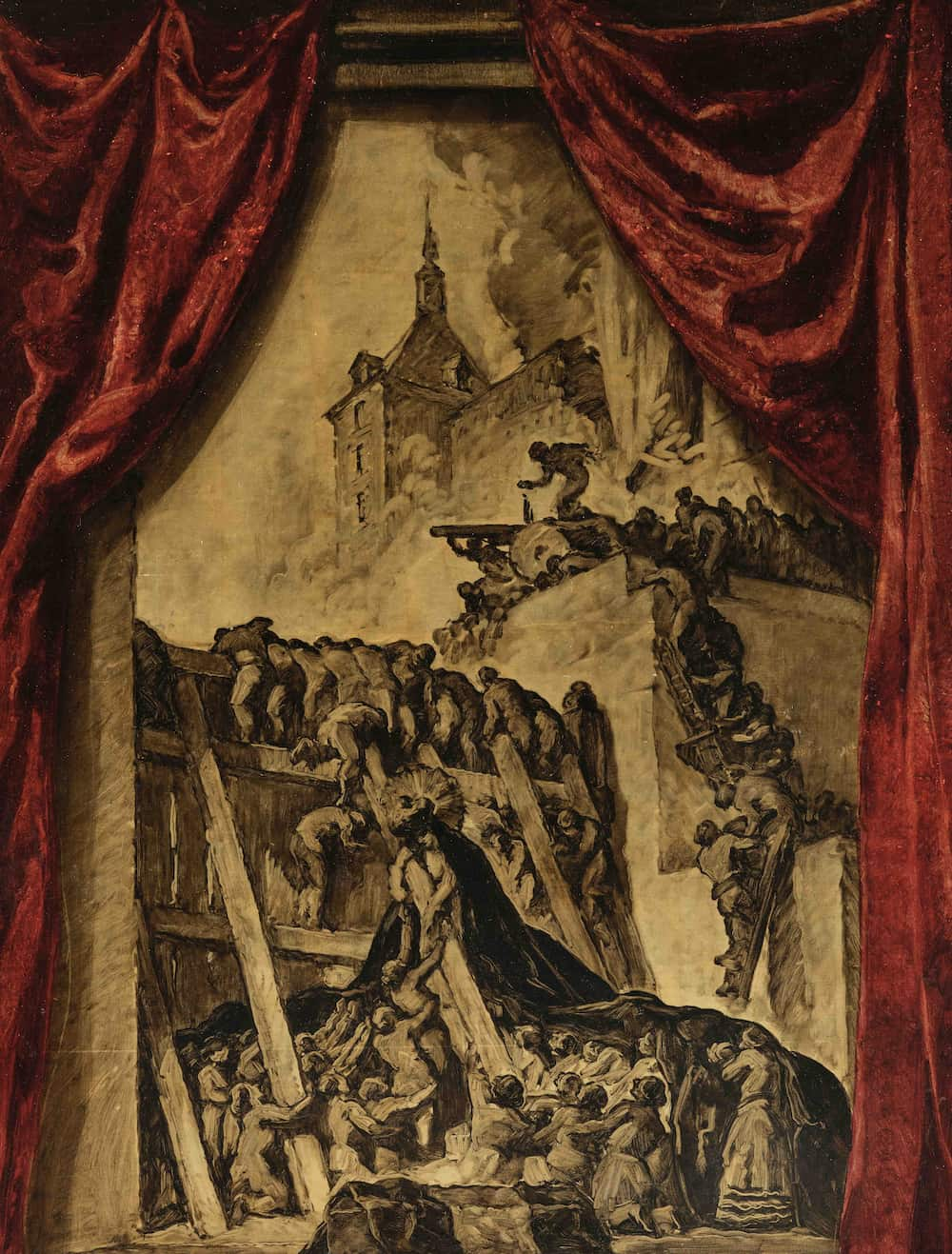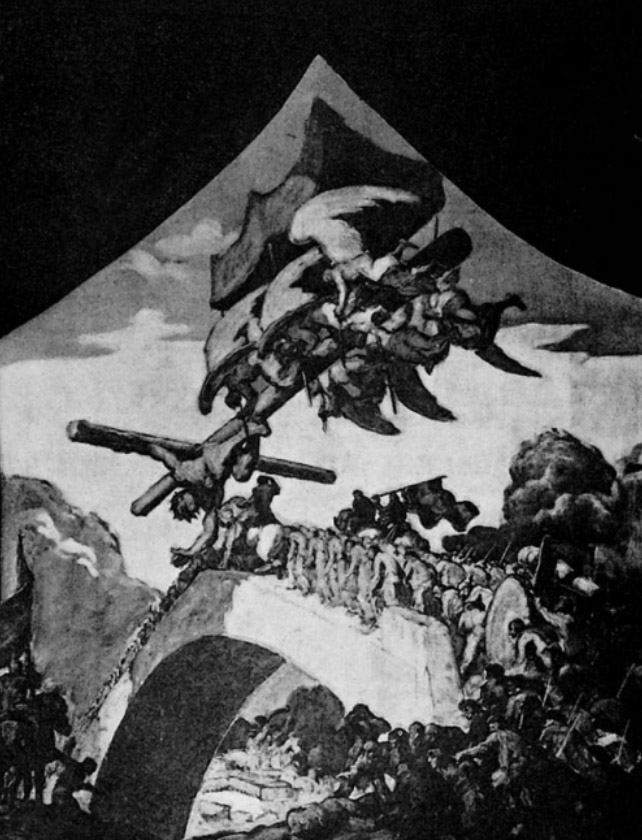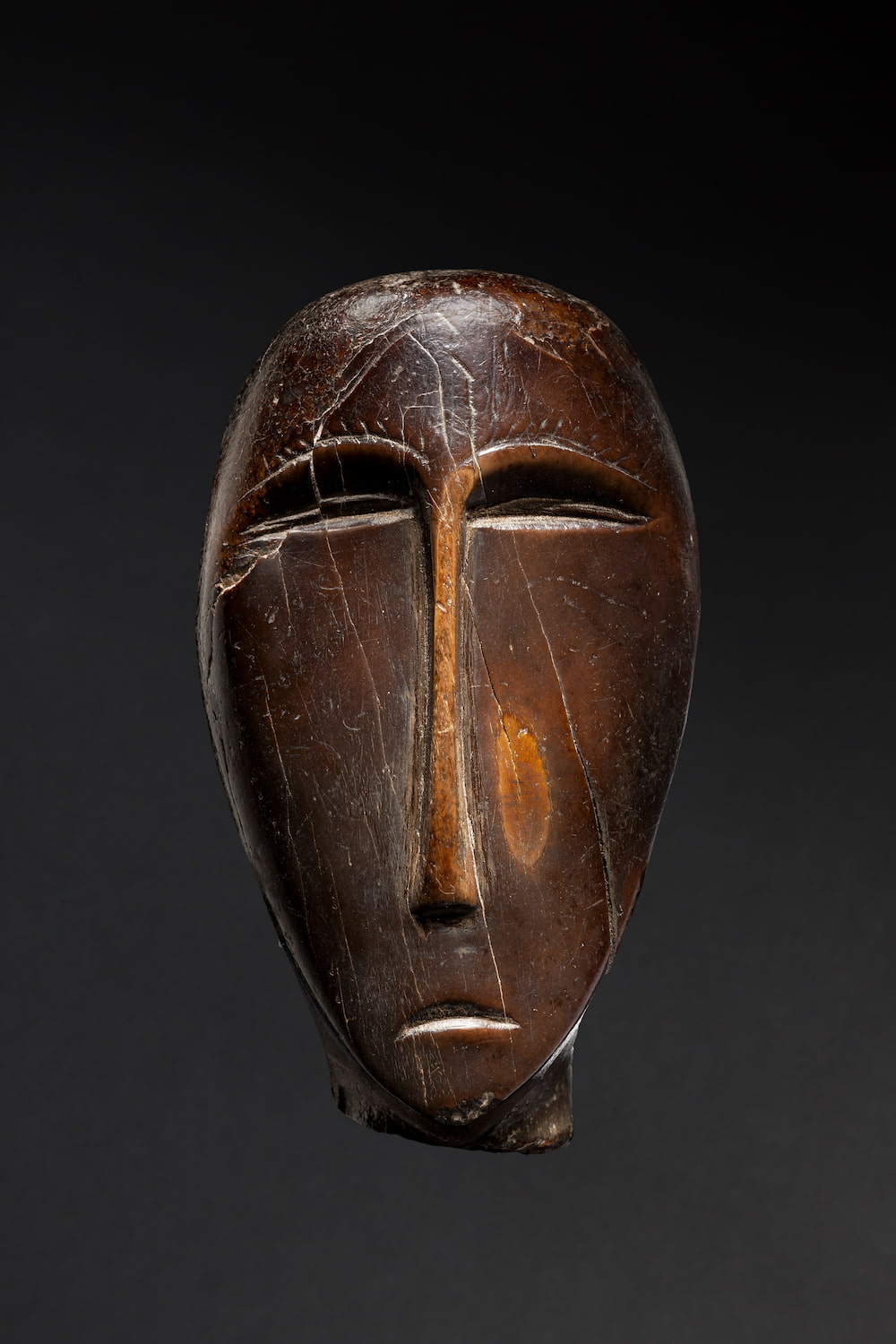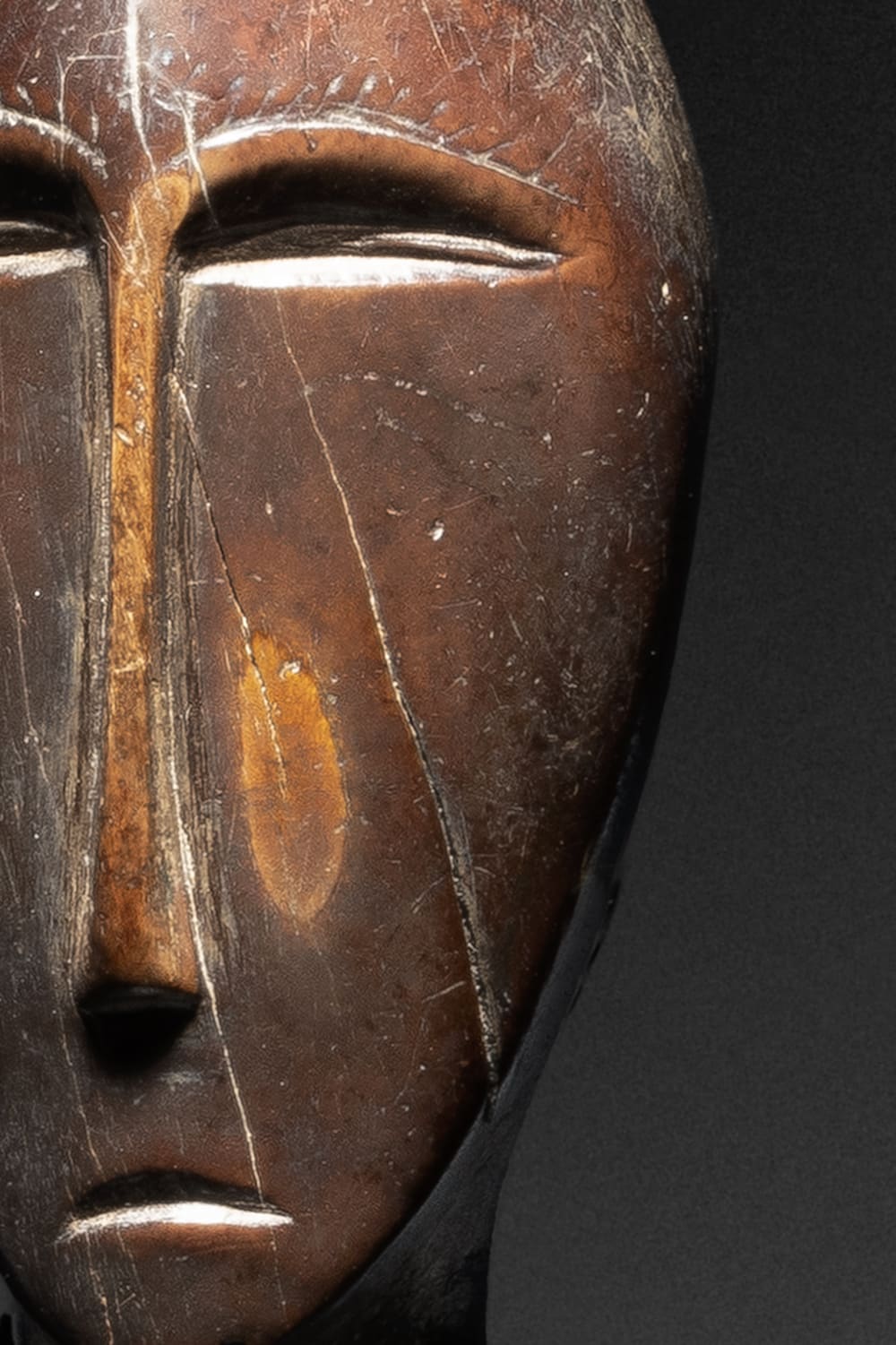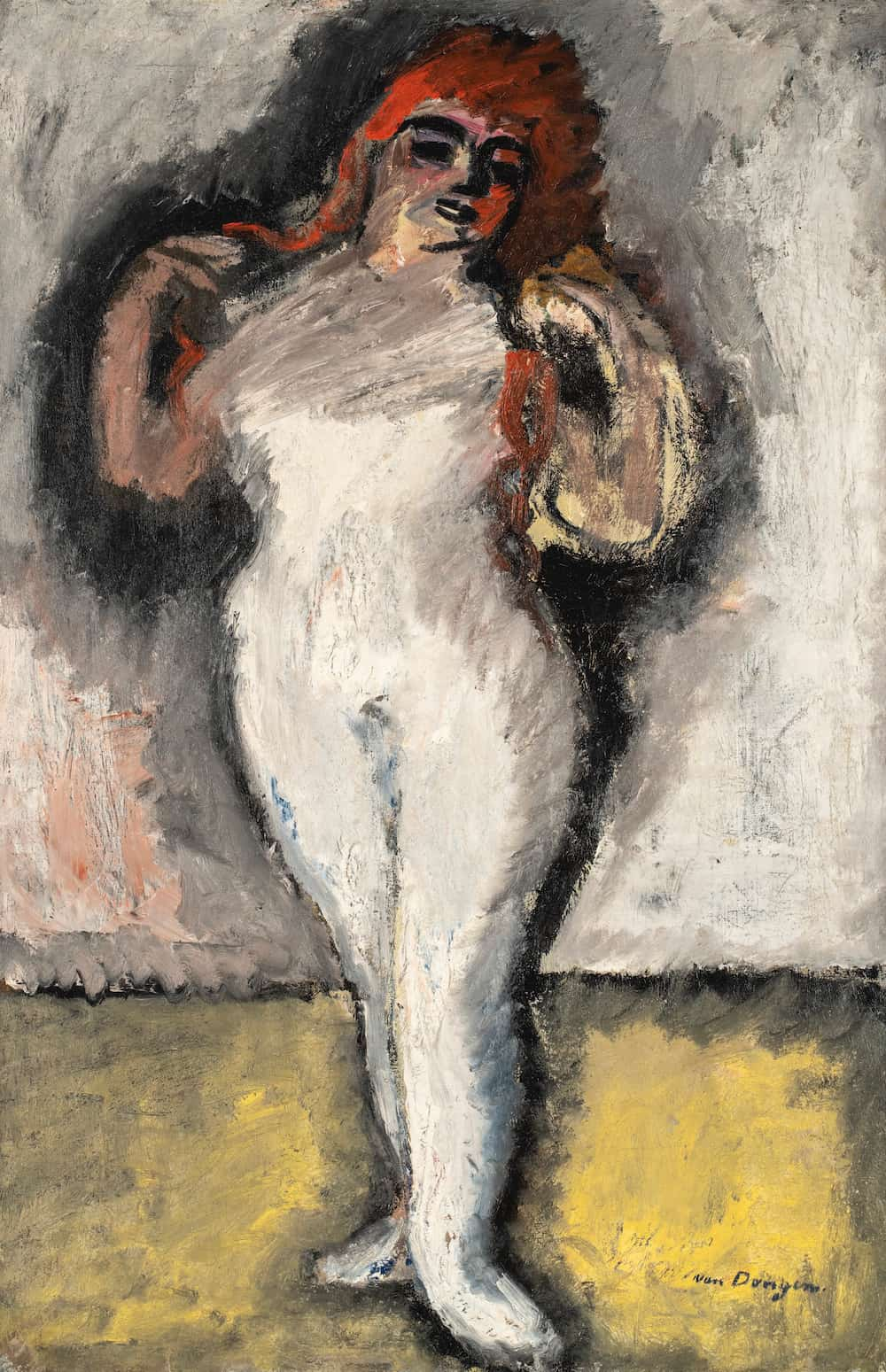Newsletter no. 9
Monday 31 July 2023

Each week discover the exhibitors of FAB PARIS 2023.
This week, discover a sketch by José Maria Sert presented by Galerie Perrin Fine Art, a sculpted head chosen by Galerie Flak and an oil on canvas by Kees van Dongen presented by Galerie Taménaga.
Perrin Fine Art
Dedicated to the arts for the past three generations, the Perrin family is one of the most acclaimed authorities in French 18th century fine art. From its prestigious showroom on the Faubourg Saint Honoré in Paris, the Galerie Perrin radiates 17th, 18th and early 19th century art onto the world. Indeed, Galerie Perrin has been participating in the Paris Biennale since it was launched, and each year exhibits at the TEFAF European Art Fair,in Maastricht as well as in New York, at the BRAFA in Brussels and Masterpiecs in London. Galerie Perrin exemplifies the goût français in its most refined and ultimate luxurious attributes, offering a new vision emphasizing pure and sleeker outlines, bringing together past and future, classicism and modernity. As a result of its praised choices and notorious expertise in serving official organizations, Galerie Perrin has repeatedly been cooperating with the most prominent institutions throughout the years. Its clientele includes the château of Versailles, the Museum of Marly and the Mobilier national in France, as well as the Metropolitan Museum of Art in New York and the J. Paul Getty Museum in Malibu in the United States. Thus Galerie Perrin is the ultimate destination for distinguished and discerning collectors, worldly international interior designers and museum curators seeking rare objects and reliable guidance.
José Maria Sert
(Barcelone1874 – 1945)
The defense of the Alcazar, sketch for the chapel of the Alcazar in Toledo.
Spanish school, 1943
Oil and gold leaf on panel
Dimensions non encadré : H. 116 cm (45 5/8 in.), L. 89 cm (35 in.)
Provenance
Collection particulière
Fig.1 : The Road to Victory, 1943, oil on isorel,
private collection
About the Artwork
Described by Guillaume Apollinaire as a “modern baroque” artist, José Maria Sert‘s spectacular sketch is a superb demonstration of this. Intended to decorate the chapel of the Alcazar, the canvas represents one of the most surprising episodes of the Spanish Civil War: the siege of the Alcazar. In it, Sert depicts the Virgin of the Rosary sheltering kneeling Nationalist soldiers in the undulating folds of her massive veil, emphasizing the faith of the martyrs of Catholic Spain, who enjoy her divine protection. It helps hold up one of the pillars that support a huge wooden door that closes a gap in one of the walls of the enclosure.
The siege of the Alcazar, one of the first battles of the Civil War, took place from July 19 to September 26, 1936. Since the news of the coup d’état by the armed forces on July 18, 1936, nationalist putschists and republicans fought in Toledo. But the numerical superiority of the Republican troops gave them the advantage. The soldiers of Toledo, having rallied to the side of the “nationalist” insurgents, regrouped inside the Alcazar fortress, taking their families with them; surrounded by the Republicans, they repelled all the assaults, endured aerial bombardments and artillery shelling, survived the explosion of mines and were finally delivered by Franco’s troops of the African Army. The liberation of the Alcázar had an international impact and allowed General Franco to consolidate his power, although he had lost the battle of Madrid.
In 1943, Sert was commissioned by the government to design the decorations for the Alcázar chapel, with whom he collaborated in the reconstruction of destroyed monuments. On August 3, 1936, the Republicans set fire to Vic Cathedral, for which Sert had created the decorations. None of the paintings could be recovered. Sert wanted to repaint each of the 22 canvases. In the spring of 1937, the painter looked for financing and turned to the party that opposed those who had burned the paintings: the Burgos government, whose leader was General Franco. He did not yet have the legitimacy to do so and agreed to participate in the restoration on a personal basis. The support of the man who was to become the head of the Spanish state in 1939 gave rise to ambiguity about his political opinions. Sert was certainly not a fascist, but he was accommodating, far from any political concerns, to the governments in place without supporting them.
Sert made three sketches to be transformed into murals: The Defense of the Alcazar, The Way of Victory (Fig.1) and The Angel of Peace. Here we find his usual sumptuous stylistic devices from the Baroque period, giving a theatrical, dramatic and abundant sense to the facts that are meant to be heroic. Sert did not have the time to realize these decors because he died in 1945.
Galerie Flak
Galerie Flak is located 8 rue des Beaux-Arts, Paris, France. It was founded in 1990 by Edith and Roland Flak. The gallery specializes in ancient arts from Africa, Oceania & North America.
Julien Flak is a certified expert in ancient arts of North America and Oceania, a member of the European Chamber of Expert-Advisors in Fine Art and Syndicat National des Antiquaires.
This year marks the 3rd participation of the gallery at FAB Paris (Fine Arts Paris/ La Biennale). The gallery also participates in important art fairs around the world including Parcours des Mondes or Paris Tribal.
About the Artwork
Elongated features, a pure, stylized face, a gaze from eternity… Are we looking at an idol from the Cyclades, a prehistoric Venus of Lespugue, or an ancestor from Easter Island? The truth is elsewhere: this sculpture carved in marine ivory, patinated by the cold, the wind and the passage of time, comes from those vast frozen lands of the Far North. This head is exceptional for the cleanness of its lines, its size and the expressiveness of the features. It is over 2000 years of age and comes from the Bering Stait region in Alaska.
The tautly stretched facial features are reminiscent of the art of Alberto Giacometti, Constantin Brancusi or Henry Moore.
This archaic carving demonstrates immense sculptural presence. From an artistic standpoint, it is both beautifully haunting and mystical. The carving displays a deep power and psychological force about it.
Redolent of sacredness, this exceptional, large head from an immemorial past seems to stare at us with a gaze that is infinitely poetic and magnetic.
This sculpture is a veritable miniature giant.
The head presented here is carved in the partially fossilized tooth of a walrus. Walrus ivory was the most abundant material found on St. Lawrence Island and near the coasts around the Bering Strait. Walrus ivory survived well-preserved for many centuries not only because of its dense material quality but because Okvik / Old Bering Sea artifacts ended up buried in ice and permafrost, the permanently frozen soil of Arctic lands. Their long interment imparted a rich coloration with subtle variations and deep patina to the ivory as can be seen here.
Only a short distance off the coasts of Siberia, in the hostile milieu of the Far North, the first ancient Eskimo civilizations crossed the Bering Strait to establish themselves in Alaska around 2000 B.C. According to William Fitzhugh, from the National Museum of Natural History, Smithsonian Institution and Bryan Just from the Princeton University Art Museum (see
« Gifts of the Ancestors, Ancient Ivories of Bering Sea », Princeton, 2009), the purpose of these enigmatic human figurines and heads remains unclear. Analogies drawn from the historic period suggest that perhaps they were made as dolls, for use in fertility ceremonies, or for calling upon the “masters” of game animals. Other ethnographic parallels recorded in the early 20th century demonstrate that human figurines could be used by their owners as personal “assistants” and “spiritual helpers” to capture prey or as “guardians” to safeguard humankind from those physical and spiritual dangers encountered in the landscape.
The literature also describes other apotropaic functions: protecting against disease, serving as birthing amulets, and acting as general household guardians and deities. On St. Lawrence Island (Sivuqaq), guardian spirits communicated with their human companions in dreams and advised them of specific ceremonial activities to avoid sickness or to bring the family success in hunting. In such cases, spiritual assistants seemingly provided their human masters with a means to actively intervene in the cosmos.
Among the historic Chukchi of Siberia, guardian spirits were also believed to be embodied in specific kinds of human and animal figurines. The ethnographic information, coupled with the figures’ remarkable beauty, suggest a complex and important role for human figures in ancient Bering Strait cultures.
Large Okvik head Old Bering Sea
culture (Archaic Eskimo) St Lawrence Island, Alaska
Fossilized walrus ivory
Circa 200 BCE – 100 AD
Height: 3 in. (7.8 cm)
Provenance:
Excavated in 2012 on Punuk Island, Alaska
Ex Bonhams San Francisco, December 2013, lot 1121
Ex collection Donald Ellis, inventory # E4047
Ex private collection, Paris, acquired from the above, 2014
Published:
« Art of the Arctic: Reflections of the Unseen », D. Ellis, 2015, plate 7 pp. 23-23
Photo : © Vincent Girier-Dufournier – courtesy Galerie Flak
Galerie Taménaga
Founded by Kiyoshi Taménaga in Tokyo in 1969, Galerie Taménaga subsequently opened two additional spaces in Osaka and Paris in 1971. In 2021, exactly fifty years after the inauguration of the Paris branch, a new gallery was established in the city of Kyoto.
Galerie Taménaga was the first Japanese art gallery specializing in Western masters. As such, its collection includes numerous masterpieces by Impressionist and modern masters such as Bonnard, Chagall, Derain, Dufy, Picasso, Redon, Renoir, Utrillo, van Dongen, and others. Today, the gallery continues its work of representation and advisory services for collectors. In parallel, the gallery is also dedicated to the discovery and support of contemporary artists, including established artists such as Chen Jiang-Hong, Takehiko Sugawara, Kyosuke Tchinaï, Tamihito Yoshikawa, as well as American artist Tom Christopher and Spanish artist Lorenzo Fernandez.
More recently, the gallery has been keen on showcasing the work of young Japanese talents. For some who have just graduated, their respective works are considered true revelations, positioning the gallery as a major advocate for the contemporary Japanese art scene.
Kees Van Dongen
(1877-1968)
The White Jersey
1908, Oil on canvas
81 x 54 cm
Signed lower right “van Dongen
Provenance
– Galerie Bernheim Jeune (n°16777)
– Samy Chalom, Paris
– By descent from Jacques Chalom, Paris, 1962
– Leonard Hutton Galleries, New York, 1965
– Anonymous sale, Champin, Lombrail & Gautier, Enghien-les-Bains, 24 November 1987, lot 20 Anonymous sale, Sotheby’s, London, 2 December 1992, lot 122
– Kunsthandel Borzo, ‘s-Hertogenbosch, 1993 Private collection
Newsletter
Stay informed of our news
by subscribing to the FAB PARIS newsletter


